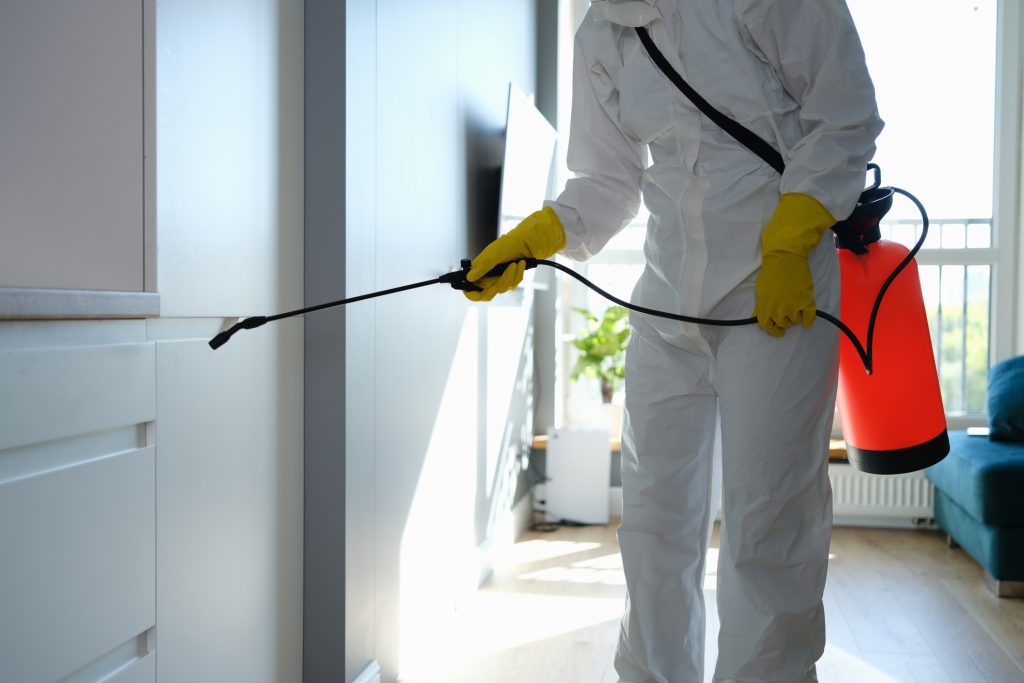Expert Pest Control to protect your property pest-free all year long.
Eco-Friendly Parasite Control Approaches for Managing Wildlife in Urban Locations
Urban areas often locate themselves at the junction of human task and wild animals, leading to special difficulties in insect administration. These techniques not only safeguard the environment yet additionally boost area involvement in wildlife management. As urban populaces proceed to grow, comprehending the dynamics of wild animals interactions becomes significantly crucial.
Understanding Urban Wild Animals Dynamics
Recognizing Urban Wild animals Dynamics is important for creating efficient and green bug control methods. Urban areas are increasingly coming to be environments for different wildlife varieties, driven by aspects such as habitat fragmentation, food schedule, and human infringement. Recognizing these characteristics permits a nuanced strategy to pest administration that aligns with eco-friendly principles.
Urban wild animals commonly includes types such as raccoons, squirrels, and birds, which adapt to city atmospheres, finding specific niches in environment-friendly spaces, parks, and even houses. Their visibility can lead to disputes with human beings, particularly when they manipulate human resources for food and sanctuary. Recognizing the habits and eco-friendly roles of these varieties informs strategies that lessen adverse interactions while promoting biodiversity.
In addition, acknowledging the interdependencies within metropolitan ecological communities helps in determining critical areas for habitat preservation and repair. This expertise adds to the development of integrated bug monitoring (IPM) strategies that consider the ecological balance, thus minimizing dependence on harmful chemicals. By fostering coexistence between humans and urban wildlife, cities can create healthier environments that benefit both citizens and regional environments, leading the way for lasting metropolitan living.
Natural Repellents and Deterrents
Natural repellents and deterrents provide a sustainable alternative to conventional pest control approaches by harnessing the power of nature to maintain undesirable varieties away. These green remedies typically utilize plant-based active ingredients, crucial oils, and various other normally taking place materials that hinder bugs without hurting the environment.
One effective all-natural repellent is peppermint oil, which is understood to ward off rodents and pests. Its solid fragrance is unpleasant to several bugs, making it a popular choice for city setups. Likewise, vinegar and citrus peels can work as deterrents, as their strong odors are typically uninviting to various wildlife.
In addition, diatomaceous earth is an all-natural powder that can be spread out in areas prone to pest activity, efficiently dehydrating and hindering pests without presenting threats to non-target varieties. Additionally, garlic sprays and neem oil are recognized for their capability to ward off a variety of pests, consisting of both pests and bigger wildlife.
Applying these all-natural repellents not only minimizes reliance on chemical pesticides however also advertises a much healthier city community, fostering an extra balanced coexistence between people and wildlife. By using these strategies, city locations can effectively take care of parasite populations while decreasing ecological impact.
Environment Alteration Strategies
Reliable habitat adjustment methods play a crucial role in lasting bug administration by altering the atmosphere to make it much less for pest invasions. By understanding the eco-friendly characteristics of metropolitan areas, property proprietors can apply calculated modifications that prevent bugs while promoting biodiversity.
(Home Pest Control)One key technique includes maintaining correct hygiene. This consists of normal waste elimination, securing trash can, and removing standing water to lower breeding sites for insects and rodents. In addition, landscaping practices such as picking native plants can boost eco-friendly balance, offering environments for helpful microorganisms while reducing resources for parasites.
An additional important technique is to seal entry points in buildings. Evaluating and fixing fractures in foundations, walls, and home windows can significantly reduce parasite gain access to. In addition, developing physical barriers, such as fences or plant why not check here barriers, can hinder wild animals motion into human-inhabited locations.
Integrated Parasite Management Practices
Building upon habitat adjustment techniques, integrated parasite monitoring (IPM) practices provide an all natural technique to regulating pest populations while decreasing ecological impact. IPM combines numerous approaches, including biological, social, mechanical, and chemical controls, to attain efficient insect management.
Biological control includes the intro of all-natural killers or parasites to minimize pest populations. Social practices, such as plant rotation and cleanliness, interfere with pest life process and reduce their habitats - Pest Control. Mechanical controls, like catches and barriers, give instant remedy for insect stress without chemical intervention
Chemical controls are utilized as a last hope, concentrating on targeted applications that limit harm to non-target varieties and the environment. The option of environmentally friendly chemicals, when necessary, is important to the IPM structure. Additionally, checking pest populations and examining possible damages helps inform decision-making, making certain that interventions are timely and effective.
Neighborhood Participation and Education And Learning

(Fire ant control Port Charlotte)Workshops and educational sessions can gear up citizens with expertise about native types, environment preservation, and effective safe pest administration methods. Cooperation with colleges, local organizations, and government companies additionally boosts instructional outreach, ensuring that vital info gets to varied target markets.
In addition, community-led campaigns, such as neighborhood clean-up days and habitat remediation projects, not only promote biodiversity however likewise enhance neighborhood ties. Pest control service. By motivating citizens to share their experiences and monitorings, neighborhoods can establish targeted methods that address specific local pest issues
Incorporating feedback from locals into insect monitoring intends makes it possible for an extra receptive and flexible approach to wildlife challenges. Ultimately, informed and engaged neighborhoods are crucial to attaining lasting success in green pest control, resulting in healthier city environments that value both human and ecological requirements.

Verdict
Finally, green bug control approaches deal lasting options for managing urban wild animals. By focusing on environment alteration, utilizing all-natural repellents, and executing incorporated insect management methods, communities can cultivate a harmonious conjunction with local fauna. In addition, engaging citizens through education improves recognition and encourages accountable wild animals communications. Eventually, these approaches not just protect biodiversity however likewise advertise ecological health, making sure city locations continue to be vibrant environments where people and wild animals grow with each other.